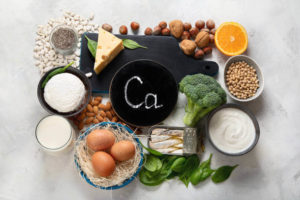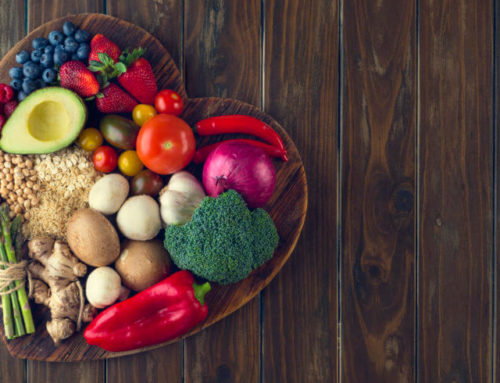
From Getty Images
Calcium: Dairy or Bust?
By Nora Burnfield, Bastyr University Dietetic Intern
Thanks in large part to the iconic “got milk?” campaign that started in the 1990s, we all know that milk is high in calcium and calcium is needed to build strong bones. While it’s true that the vast majority of the body’s calcium is found in our bones where it provides strength and structure, calcium is also used for several other body functions such as muscle and nerve activity. It is important to intake enough calcium to prevent the body from needing to draw it out of the bones. But what if you don’t or can’t eat dairy? Dairy allergies or intolerances are not uncommon in kids, and it can be easy to worry about whether or not your kid is getting the calcium they need. Don’t worry- there are plenty of ways to include calcium in the diet!
How much calcium do you actually need?
The recommended dietary allowance (RDA) for calcium varies by age.

What does 1000-1300 mg of calcium look like?
To give the recommendations some context, one cup of dairy milk has 300 mg of calcium. Fortified plant-based milks have about the same amount (300 mg) per cup serving- good news for those choosing alternatives to dairy milk. It’s important to note that the amount of calcium in plant-based milks varies by brand and variety, so make sure you read the label.
Calcium can also be eaten, and I’m not just talking about cheese! Everyone’s favorite leafy greens, such as kale and collards, have about 200 mg of calcium in 1 cooked cup! If you’ve done the math, you’re probably realizing that 1000 mg of calcium ÷ 200 mg per cup of kale = 5 cups of kale per day! While dark leafy greens are nutrient powerhouses that warrant being consumed regularly, the average person is probably not going to eat 5 cups per day. Luckily, there are other non-dairy sources of calcium that provide varying amounts such as:

Calcium isn’t the only nutrient that is important for bone health
Vitamin D helps with calcium absorption and stimulates the cells that build bone. While sun exposure is one way to get vitamin D, you’ll be happy to hear that fortified plant milks contain varying amounts of vitamin D alongside calcium.
Adequate vitamin K levels assist in the remodeling and strengthening of bones and serve as a marker for bone health. Luckily, vitamin K is found in large amounts in those calcium-rich leafy greens!
Whether you can’t tolerate cow’s milk, are vegan, or just want to cut down on your dairy consumption, there are many options for reaching the RDA of calcium.

1000 mg Menu
Breakfast:
- 1 packet plain instant oatmeal (120 mg)
- 2 tablespoons almond butter (100 mg)
- 1/2 cup fortified plant milk (150 mg)
- Banana (5 mg)
- Meal total: 375 mg calcium
Lunch:
- Mashed bean wrap
- Whole wheat tortilla (70 mg)
- ½ cup pinto beans (40 mg)
- ½ cup cooked kale (100 mg)
- ¼ bell pepper (2 mg)
- Navel orange (50 mg)
- Meal total: 262 mg calcium
Snack
- Apple (10 mg)
- 2 tablespoons peanut butter (20 mg)
- Meal total: 30 mg
Dinner
- Stir fry
- ½ cup calcium-set tofu (200 mg)
- ½ cup broccoli (38 mg)
- ½ cup carrots (20 mg)
- 1 tablespoon sesame seeds (90 mg)
- 1 cup brown rice (5 mg)
- Meal total: 353 mg calcium
Total mg of calcium: 1,020
Calcium-packed snacks
- Smoothie
- ½ cup fortified plant milk (150 mg)
- ½ cup fortified orange juice (175 mg)
- ½ banana (2.5 mg)
- ½ cup frozen strawberries (10 mg)
- 1 tablespoon chia seeds (75 mg)
- Total calcium: 412.5 mg
- Hummus toast
- 1 slice whole grain bread (50 mg)
- 2 tablespoons hummus (8 mg)
- ½ cup shredded carrot (10 mg)
- ½ tablespoon sesame seeds (45 mg)
- Total calcium: 113 mg
- Fruit plate
- 1 mandarin orange (38 mg)
- 3 dried figs or Medjool dates (45 mg)
- 1 tablespoon almonds (25 mg)
- ½ cup fortified plant milk (150 mg)
- Total calcium: 258 mg


